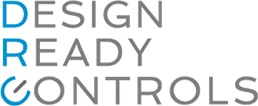Smarter Recruiting
Time for Change
To bring on new employees, Design Ready Controls historically used temp-to-hire. When the economy was slower and unemployment rates were higher, good candidates were easy to find. Agencies would bring in qualified people and we would choose the ones we wanted.
Things have changed. Our company has grown and is still growing. We need more new employees, and unemployment is the lowest it has been in decades. Qualified candidates are now more difficult to find. Our former recruiting practices had become ineffective, so in 2018 we redesigned our approach.
Take It Inside
One way we worked to overcome our recruitment obstacle was using an in-house recruiter. This approach brought us higher quality candidates and got rid of placement fees. We implemented the idea at both our Virginia and Minnesota locations, with a few differences between them:
In Virginia, the program was launched with our own recruiter, and every new employee was a direct hire. We felt that agencies might settle for database matches instead of finding out what candidates want to do, or what their skills are. Using an in-house recruiter has reduced turnover and pays for itself. It was successful right from the start.
In Minnesota, our largest facility, we took a two-step process:
- Establish an exclusive partnership with an agency
- Hire and transition a corporate recruiter through an agency
We agreed to hire all our candidates through one agency on condition that the agency assign a full-time recruiter to our needs. The recruiter was still an agency employee but dedicated to us. The plan was to have the agency help find and hire our own recruiter. Things started slowly, but since we found the right person we have had the same results as in Virginia—higher quality candidates and lower turnover.
Keep Reaching Out
We also adapted a few strategies to complement our recruitment efforts: on-site hiring events, a loyalty retention program for temp-to-hire employees, and an increased presence at colleges, high schools, and community events. We go anywhere that helps us maintain existing relationships and create new ones. This helps candidates think of Design Ready Controls as the kind of place they would like to work. We also have a referral program that provides incentives to employees for bringing in high quality recruits.
Another part of our strategy that has worked very well is focusing on training and development. We visit high schools and tell students that we have jobs available regardless of the path they want to take. We then work with local technical colleges to help our employees continue their education and prepare for higher positions. The technical colleges also encourage students to consider working for us.
Build Your Own
These practices work well for Design Ready Controls, and we’re happy to share them. How well they will serve you depends on your needs. Analyze your numbers to see what makes sense for your company. For example, if you only have 10 temps or a flat organization, in-house recruiting may cost more than the benefit it brings. An internal recruiter would have to cost less than you are paying in agency fees.
Figure turnover costs into your calculations. According to the U.S. Department of Labor, it costs about $5,000 to on-board and train a new hire in production—and more for an office employee. If in-house recruiting reduces turnover, it’s worth at least $5,000 per employee who stays.
As you consider in-house recruiting, talk with internal customers like plant managers and supervisors. Tell them the route you want to take. If they feel heard and included, they will support your efforts.
Also, you want a recruiter who can work comfortably with your existing operations. Your management team should be able to tell your recruiter what they need instead of calling an outside agency.
Stay Open
Recruitment keeps changing. Just as your company may need to try a new approach now, it will again as the economy shifts and customer relationships evolve. Focus on your operational needs and try not to become too attached to a given tactic. Leave yourself open to creative ideas. If something makes sense to change now, do it now. You may find, as we sometimes have, that you’ll wish you had started sooner

